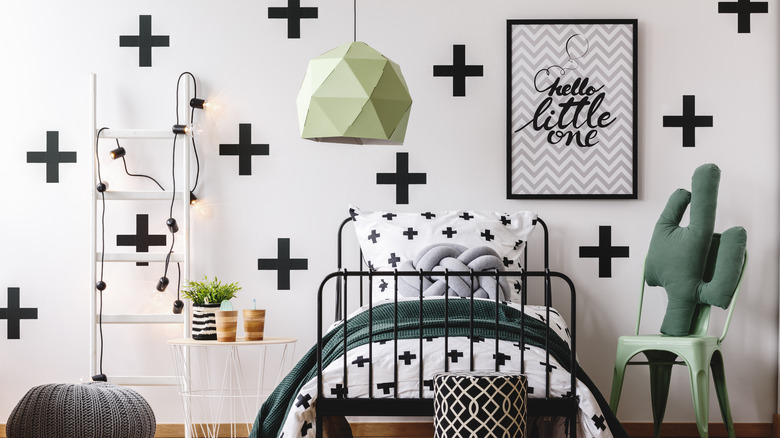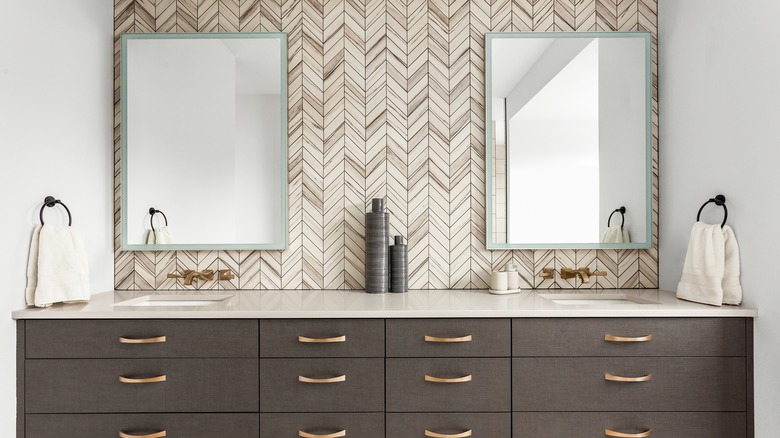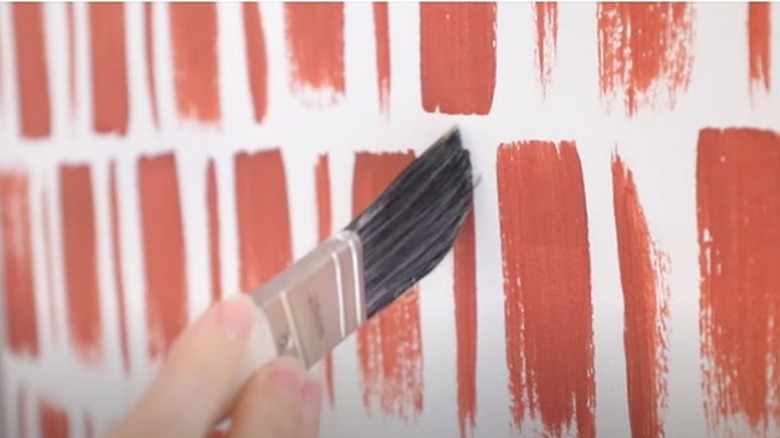How To Achieve The Painted Wallpaper Look
Do you want the look of wallpaper without a steep price tag? Applying wallpaper can be a costly, tedious course. Compared to painting, wallpaper, mainly hand-painted designs, may typically be a more expensive approach. The average price for medium-quality wallpaper may range from $25 to $50, with hand-painted panels starting at $600 and increasing to $1,000 or more. Whether it's an accent wall or an entire room, how much you spend will ultimately depend on the intended space.
How can you apply a painted wallpaper method with modest effort? All you need are a few paintbrushes and some paint. Depending on your skill level, repetitive geometric designs are a classic and simple way to attain an overall refined appearance. You might showcase straight or fluid lines, including circles, dashes, and patchwork for abstract patterns. If you have more time or specialize in this artistry, you might invent more intricate designs focusing on flowers, plants, natural landscapes, and animals. Ideal places to paint accent walls might be in a bathroom, bedroom, kitchen, or living room, especially to accentuate a fireplace and mantel. Whatever you imagine, there are infinite types of wallpaper designs that you can recreate with a few simple painting techniques.
Establish a repetitive, visual pattern
To achieve the vision of a painted wallpaper design, initiate a concise plan that showcases a repetitive theme. While original wallpaper often has a harmonious design to follow, keep in mind where you want portions of the image to start and end within your design. Whether it's your favorite nature scene or an abstract pattern, it's all about repetition. You can easily get creative in a nursery or kid's room while focusing on specific shapes, including animals, flowers, trees, or ocean life. Make it simple with colored sprinkles, polka dots, leaves, or wavey lines. If you're going for a larger scale, you might develop an image to look more like an art mural with mountain scenery, a cityscape, or a jungle theme.
While bedrooms and living spaces are great places to showcase the painted papering aspect, accent walls can undoubtedly attract attention. Consider a hallway, bathroom, kitchen backsplash, or another significant area. A landing space on a stairwell makes for an appealing, dramatic feature. Black and white are highly contrasting shades that produce modern, distinctive vibes. You might cover a plain white wall in black paint, then highlight the zone with a unique, repetitive pattern of three white painted lines, as seen on TikTok. Other pleasing pairings could be a dark charcoal gray background with white or soft pink lines or shades of blue, gray, or gold upon a white wall.
Create a painted design with simple tools
Once you've determined your painted wallpaper design, establish the tools required. Depending on the pattern crafted, this might include small to large paintbrushes, tape, and measuring tools. Apply diagonal black stripes on a white background for a subtle yet effective design. According to Everyday Kait, all you need is a small fine-line paintbrush, a right-angle ruler, or even an angled piece of cardboard. Place painter's tape about a few inches apart from each section along the wall to achieve sleek, symmetrical lines. Using your angled tool, apply a sloped paint stroke while continuing up or down. Other vivid markings to consider showcasing might be herringbone and chevron, including X's, plus signs, dots, or dashes.
Another abstract technique you can use is a 2-inch flat brush (or your desired size). To create natural-looking marks, you can start at the top or bottom of a wall space using a basic paintbrush while alternating wide and thin brush strokes. Dip your brush in the paint each time for sufficient coverage, notes Megan Arzbaecher, as you can apply the stains upward or downward for an overall authentic expression. Continue with your repeat pattern while turning the brush back and forth each time. Make sure to position the tape where needed or leave it out entirely for a more rustic, handmade look.


